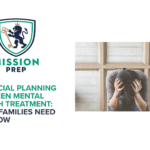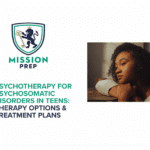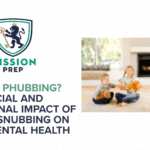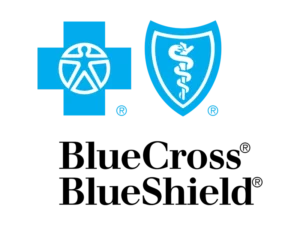Holistic Therapies for Psychosomatic Disorders in Adolescents: Mind Body Treatment Options

If your teen is struggling with symptoms that appear purely physical, holistic therapies might seem like the last place you should look for answers. Yet this is the challenge that psychosomatic disorders can often present. On the surface, issues may seem purely rooted in the body, but, in reality, they reflect a complex interplay of the mind and body working against each other.
Holistic therapies for psychosomatic disorders in adolescents involve approaches that target mind-body healing, improving both the mental and physical aspects of the conditions. As a result, teens can finally experience relief from symptoms and go on to live full, satisfying lives.
If you suspect that your teen could have a psychosomatic disorder, a mental health professional can talk you through the right mind body treatment options for their needs. This guide can also help you better understand holistic therapies for psychosomatic disorders in adolescents, as it covers:
- What psychosomatic disorders are
- Whether teens can suffer from psychosomatic disorders
- Mind-body therapies for psychosomatic disorders
- How mind-body therapies work for teens with psychosomatic disorders
- The types of teen psychosomatic disorders that respond best to mind-body therapies
- How Mission Prep can help
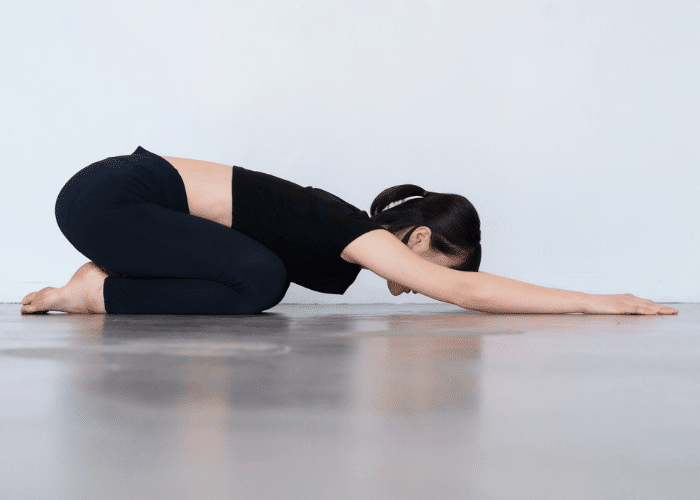
What Are Psychosomatic Disorders?
Psychosomatic disorders can be confusing and distressing for both teens and parents. This is because they typically present as physical symptoms while their roots lie in the mind. For example, a teen might complain of recurring pain or other physical problems, yet routine medical tests reveal nothing out of the ordinary. Such results don’t mean these symptoms are made up; they suggest that stress or emotional strain is finding a physical outlet.
Common examples of psychosomatic symptoms include:
- Headaches
- Stomach upsets
- Tight muscles
- Difficulty sleeping
- Breathlessness during stressful situations.
The overlap of genuine distress with inconclusive medical results can leave parents in a difficult place, unsure where to turn next for support. Yet recognizing that emotional strain can translate directly into physical problems is the first step toward understanding why treatment has to look at both body and mind together.
Why Teens Can Suffer From Psychosomatic Disorders
For many teens, adolescence can feel like a storm that never quite passes. One moment it’s the pressure of schoolwork, the next it’s the shifting maze of friendships, and underneath it all, there’s the constant push to figure out who they are.
When this strain piles up, it rarely stays tucked neatly in the mind. For this reason, parents are sometimes left staring at test results that say “normal” while their child is curled up in bed, clearly unwell.
So what’s happening here? One explanation could be the link between psychosomatic disorders and other undiagnosed mental health conditions. For example, studies have shown that the more teens experience psychosomatic complaints, the greater their chances of later developing anxiety or depression.1 To put this link clearly, what could start as a tense stomach before an exam could, over time, grow into a heavier struggle with mood and energy. This is because the body’s distress slowly feeds the mind’s, and the mind returns the favour, creating a loop that can be hard to break once it takes hold.
There’s also the idea that most teenagers don’t yet understand how stress can rewrite what their body feels. They only know the headaches, chest tightness, and nausea – the tangible symptoms. Without a way to connect the dots, they’re left confused, and sometimes even doubted. Research backs this up, with a large study finding that students with lower health literacy were more likely to report both physical and emotional complaints.2 When teens don’t know what’s happening inside their bodies, symptoms can become scarier, heavier, and harder to shake off.
Treatment-wise, this is where holistic therapies, alongside psychotherapies, can offer something different. They not only bring comfort to the body but also teach teens how to name and manage the feelings behind their pain.
Mind-Body Therapies for Psychosomatic Disorders
Because psychosomatic disorders are so complex, it’s difficult to say with certainty what will work for every teen – what helps one person may do very little for another. This is why the most reliable way forward is to turn to unbiased research and see what it tells us.
Below, we look at the evidence for different mind-body therapies and how they can ease specific psychosomatic disorders.
Relaxation Techniques
Actions as simple as slowing the breath or tensing and releasing muscle groups may sound too basic to be effective, yet the evidence proves otherwise. Progressive muscle relaxation (PMR), for example, has been shown to reduce anxiety within a handful of sessions and improve sleep quality for patients struggling to switch off at night.3 A 2024 systematic review explored these effects further, confirming PMR’s positive impact on those suffering from anxiety and depression.4
The real strength of relaxation therapies lies in how accessible they are. We’re always taught to take care of our mental health in a preventative kind of way, like to eat right or exercise more. This is great advice, of course, but it’s not always possible for teens with psychosomatic issues to go for a run when an anxious thought seeps in. Yet, once relaxation techniques are learned, they can be used in the moment, easing the impact of physical symptoms. This accessibility means teens have a tool they can reach for whenever symptoms flare.
Meditation and Mindfulness
Meditation asks for more discipline than relaxation techniques, but its rewards can be striking. For example, in cases of people suffering from IBS, one study showed that mindfulness-based stress reduction turned daily pain into something far less consuming. During an eight-week course of meditation training, people went from describing their symptoms as “constant” to reporting them only “occasionally,” with improvements lasting for months afterward.5
Yoga and Movement Therapies
We’ve all heard of the benefits of yoga, and for psychosomatic disorders, these benefits may be even more profound. Because yoga brings together posture, breath, and concentration in a way that feels grounding, it can tap into the meditational values we discussed earlier.
The evidence for the benefits of yoga is also positive, with people suffering from fibromyalgia reporting that yoga reduced chronic pain and fatigue when paired with CBT.6 In patients with IBS symptoms, the results were similar, with some reporting eased bloating and digestive distress.6
Other research has shown that the mindfulness required for yoga can reduce inflammatory activity in the body, which suggests that it could be directly linked to changing biological processes.7
Tai chi and qigong are other practices that offer a gentler route but with similar gains, particularly in balance and stress reduction. These practices have the ability to soothe the body in the moment, as well as teach it to resist being hijacked by stress in the future. Studies have also shown that they can be both a preventative and a treatment for psychosomatic disorders.8
Creative Expressive Therapies
We’ve all heard of people picking up a paintbrush to relax, or maybe you’ve put on a favourite album to switch off from the world for a while. In their more structured form, these kinds of creative outlets are known as “creative expressive therapies.”
The aim of these practices isn’t to correct thoughts or movements like with other therapies, but to give emotions a different outlet through creative activity. For many people living with psychosomatic disorders, this kind of release can make the difference between stress staying in the mind or stress showing up in the body.
For example, in one study, clients in art therapy reported a marked lift in quality of life, even though clinical measures of health stayed the same.9 This gap tells us something important: Feeling better doesn’t revolve around test results, but rather, how tolerable life feels day to day. Further, research into dance therapies showed that they can lower stress hormones and ease muscle tension.10
While these therapies may not always produce numbers that impress in clinical trials, the people who use them often describe feeling calmer and lighter than before.
Clinical Hypnotherapy
Hypnotherapy has perhaps the strongest clinical record of all the mind-body therapies, particularly when it comes to irritable bowel syndrome. In fact, around 70% of IBS patients respond well to gut-directed hypnotherapy, with benefits that can stretch for years.11
Specifically, symptoms such as bloating and irregular bowel patterns reduced after hypnotherapy sessions, meaning there was no longer something consistently dominating daily life. Controlled trials back this effect up, showing outcomes comparable to the best dietary IBS treatments available.12 Beyond IBS, hypnotherapy has been applied to chronic pain and even functional neurological symptoms such as psychogenic seizures.13
Hypnotherapy’s mechanism is simple but powerful: Deep relaxation combined with guided suggestion can change how the unconscious mind responds to stress, which, in turn, calms the body’s reaction. For conditions that resist conventional treatment, this could be the point where people finally feel relief.
What Teen Psychosomatic Disorders Respond Well to Mind-Body Therapies?
Functional Abdominal Pain
Functional abdominal pain is one of the most common psychosomatic complaints in children. But the good news is that studies have shown that guided imagery and hypnotherapy can bring long-lasting relief, with some young people remaining symptom-free years later.14 For example, recently, researchers trialled a program that combined yoga and dance for girls with persistent abdominal pain. Over eight months, those who joined the sessions reported noticeably less pain compared to peers receiving standard care.15 What this evidence tells us is that when the body is given a safe, structured way to release stress, the gut often follows suit and calms down too.Functional Neurological Disorders
Functional neurological disorders are conditions in which children develop seizures or movement problems that aren’t explained by brain scans. These symptoms can be terrifying for families, but the encouraging news is that with early treatment, most young people recover fully. Specialists working in this field have shown that mind-body approaches, when combined with physiotherapy and family involvement, can help up to 95% of children return to everyday life.16 The idea here isn’t to teach the kids how to successfully “ignore” their symptoms; rather, the aim is to redirect their attention to learning skills that can help manage them. For example, the focus in the case of neurological issues might be about building regulation skills to show teens their body is capable of finding balance, and without pain. This is often a hard skill to achieve without guidance as a teen.Chronic Pain
Chronic pain has a strong mind-body component, and mindfulness-based programs for teens are proving to be a lifeline. For example, in one study, adolescents who spent eight weeks learning mindfulness and yoga reported reduced symptom severity and lower anxiety.17 In fact, some of these teens even described being able to return to activities they once avoided, simply because they had techniques to lean on when pain threatened to take over.Migraines
Children with migraines who practiced relaxation and biofeedback techniques not only had fewer attacks but also coped better when headaches did come.18 As a result, clinicians now recommend these techniques as first-line treatments rather than waiting until everything else fails. This shift in thinking shows just how much weight mind-body therapies are gaining in mainstream medicine, particularly for young people who respond well to active, skill-based approaches.Will Holistic Therapies Alone Help My Teen With Psychosomatic Disorders?
Holistic and mind-body approaches matter, and for many young people, they can provide the first real sense of relief. But it would be unfair to leave the impression that they’re the only route forward, because psychosomatic disorders are rarely simple and often need more than one strand of care.
In fact, recent research has shown that a multidimensional, inpatient approach can create significant improvements for children and adolescents facing psychosomatic challenges.19 When teens were given access to therapy that blended medical, psychological, and emotional support, they reported a…
- Reduction in symptoms
- Healthier way of understanding their illness
- Greater ability to process feelings that had previously felt overwhelming
- Way of getting their life back
Further, these benefits were most striking when clinics combined their results, showing the strength of a united, multidisciplinary model.
Inpatient settings also give professionals the time and space to consider all these factors together while removing the daily distractions that can sometimes keep a teen stuck in their cycle. It is this ability to match complex problems with equally intricate support that explains why inpatient psychosomatic programs have been found so effective.
For parents, this means there are real options if your teen needs deeper and more structured care than holistic therapies alone can offer.
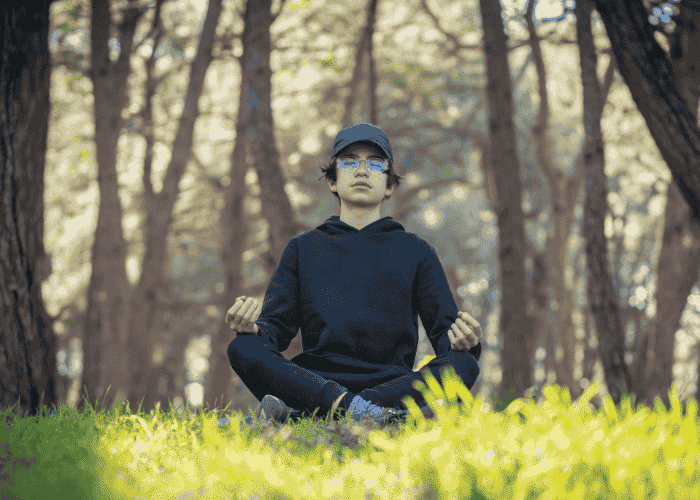
Mission Prep: Professional Support for a Variety of Teen Mental Health Issues
At Mission Prep, we know that psychosomatic disorders rarely come alone. This is why our programs are built to meet complexity with breadth, drawing on evidence-based therapies and holistic approaches that give your teen more than one pathway toward relief.
Some families find that outpatient care works best, allowing their teen to stay rooted in school and home life while still receiving consistent support. Yet, others may benefit from inpatient treatment as it’s a chance for teens to step away from daily stressors and focus fully on recovery in a structured, restorative environment.
Both options are available across our locations in the US, and each plan is tailored to the needs of your family.
Wherever your teen is in their recovery, our team is ready to walk alongside you, combining expertise, compassion, and a range of therapies to help them move forward with confidence. Contact Mission Prep today to learn more about how we can support your teen’s next steps.
References
- Grigorian, K., Östberg, V., Raninen, J., Åhlén, J., & Brolin Låftman, S. (2023). Prospective associations between psychosomatic complaints in adolescence and depression and anxiety symptoms in young adulthood: A Swedish national cohort study. SSM – Population Health, 24, 101509. https://doi.org/10.1016/j.ssmph.2023.101509
- Zhang, S., Li, D., Yang, R., Wan, Y., Tao, F., & Fang, J. (2019). The association between health literacy and psychosomatic symptoms of adolescents in China: a cross-sectional study. BMC Public Health, 19(1). https://doi.org/10.1186/s12889-019-7589-0
- Nunez, K. (2020). The benefits of progressive muscle relaxation and how to do it. Healthline. https://www.healthline.com/health/progressive-muscle-relaxation
- Khir, S. M., Yunus, W. M. A. W. M., Mahmud, N., Wang, R., Panatik, S. A., Sukor, M. S. M., & Nordin, N. A. (2024). Efficacy of Progressive Muscle Relaxation in Adults for Stress, Anxiety, and Depression: A Systematic Review. Psychology Research and Behavior Management, 17(1), 345–365. https://doi.org/10.2147/PRBM.S437277
- Zernicke, K. A., Campbell, T. S., Blustein, P. K., Fung, T. S., Johnson, J. A., Bacon, S. L., & Carlson, L. E. (2013). Mindfulness-based stress reduction for the treatment of irritable bowel syndrome symptoms: a randomized wait-list controlled trial. International Journal of Behavioral Medicine, 20(3), 385–396. https://doi.org/10.1007/s12529-012-9241-6
- Islam, Z., D’Silva, A., Raman, M., & Nasser, Y. (2022). The role of mind body interventions in the treatment of irritable bowel syndrome and fibromyalgia. Frontiers in Psychiatry, 13. https://doi.org/10.3389/fpsyt.2022.1076763
- Bower, J. E., & Irwin, M. R. (2016). Mind–body therapies and control of inflammatory biology: A descriptive review. Brain, Behavior, and Immunity, 51, 1–11. https://doi.org/10.1016/j.bbi.2015.06.012
- Abbott, R., & Lavretsky, H. (2013). Tai Chi and Qigong for the Treatment and Prevention of Mental Disorders. Psychiatric Clinics of North America, 36(1), 109–119. https://doi.org/10.1016/j.psc.2013.01.011
- Zhou, S., Yu, M., Zhou, Z., Wang, L. S., Liu, W., & Dai, Q. (2023). The effects of art therapy on quality of life and psychosomatic symptoms in adults with cancer: a systematic review and meta-analysis. BMC Complementary Medicine and Therapies, 23(1). https://doi.org/10.1186/s12906-023-04258-4
- Lopez-Nieves, I., & Jakobsche, C. E. (2022). Biomolecular Effects of Dance and Dance/Movement Therapy: A Review. American Journal of Dance Therapy, 44. https://doi.org/10.1007/s10465-022-09368-z
- Ensuring User Compliance with Nerva App for IBS Symptoms Improvement | ACG. (2023, August 4). American College of Gastroenterology. https://gi.org/media/press-info-scientific-meeting/featured-science/oral-15-app-delivered-gut-directed-hypnotherapy-program-nerva-improves-symptoms-in-patients-with-irritable-bowel-syndrome-but-how-can-we-ensure-users-are-compliant/
- Peters, S. L., Yao, C. K., Philpott, H., Yelland, G. W., Muir, J. G., & Gibson, P. R. (2016). Randomised clinical trial: the efficacy of gut-directed hypnotherapy is similar to that of the low FODMAP diet for the treatment of irritable bowel syndrome. Alimentary Pharmacology & Therapeutics, 44(5), 447–459. https://doi.org/10.1111/apt.13706
- Connors, M. H., Quinto, L., Deeley, Q., Halligan, P. W., Oakley, D. A., & Kanaan, R. A. (2024). Hypnosis and suggestion as interventions for functional neurological disorder: A systematic review. General Hospital Psychiatry, 86, 92–102. https://doi.org/10.1016/j.genhosppsych.2023.12.006
- Abbott, R. A., Martin, A. E., Newlove-Delgado, T. V., Bethel, A., Thompson-Coon, J., Whear, R., & Logan, S. (2017). Psychosocial interventions for recurrent abdominal pain in childhood. Cochrane Database of Systematic Reviews. https://doi.org/10.1002/14651858.cd010971.pub2
- Högström, S., Philipson, A., Ekstav, L., Eriksson, M., Fagerberg, U. L., Falk, E., Möller, M., Sandberg, E., Särnblad, S., & Duberg, A. (2021). Dance and yoga reduced functional abdominal pain in young girls: A randomized controlled trial. European Journal of Pain. https://doi.org/10.1002/ejp.1862
- Wolters Kluwer Health. (2023, March 9). Prompt treatment for functional neurological disorder in children is highly effective: Successful treatment programs can be established in a variety of health care settings [News release]. EurekAlert!. https://www.eurekalert.org/news-releases/982235
- Ali, A., Weiss, T. R., Dutton, A., McKee, D., Jones, K. D., Kashikar-Zuck, S., Silverman, W. K., & Shapiro, E. D. (2017). Mindfulness-Based Stress Reduction for Adolescents with Functional Somatic Syndromes: A Pilot Cohort Study. The Journal of Pediatrics, 183, 184–190. https://doi.org/10.1016/j.jpeds.2016.12.053
- Bae, J., Sung, H.-K., Kwon, N.-Y., Go, H.-Y., Kim, T., Shin, S.-M., & Lee, S. (2021). Cognitive Behavioral Therapy for Migraine Headache: A Systematic Review and Meta-Analysis. Medicina, 58(1), 44. https://doi.org/10.3390/medicina58010044
- Botschek, T., Monninger, M., Schäfer, D., Rabia Cevik, Kübra Memis, Müller, U., Monninger, M., & Brosig, B. (2023). Evaluation of multidimensional pediatric-psychosomatic inpatient therapy: a pilot study comparing two treatment modalities. Frontiers in Psychology, 14. https://doi.org/10.3389/fpsyg.2023.1022409


